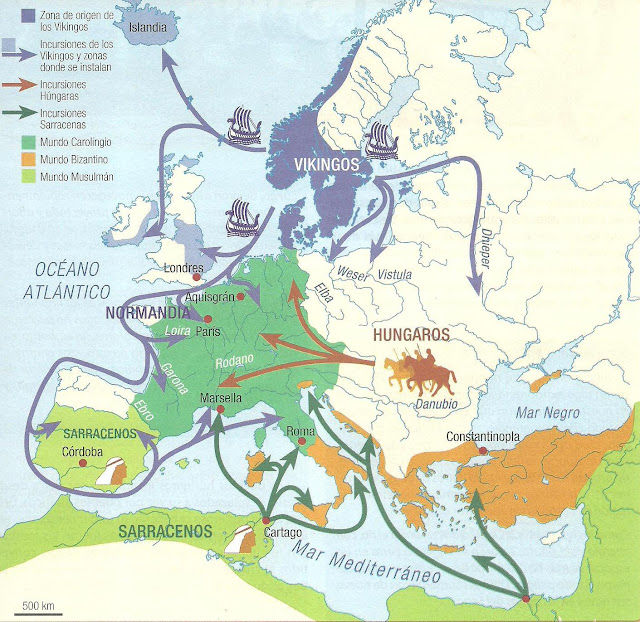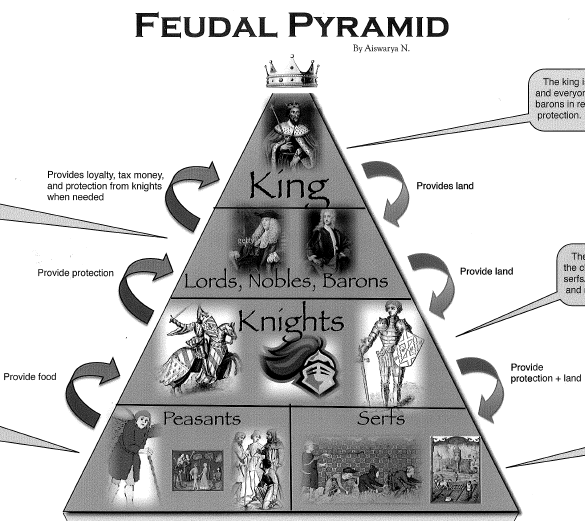
They were paid with the corvées, benefits in the form of personal unfree labour (corvée of cultivation or manufacture) that the farmers had to carry out in the stately reserves. In the tenancies censuses were paid, charges (taxes of public origin). There were also villani (peasants who had already obtained freedom and who had placed themselves under the patronage of a lord) or the mancipi, the freedmen, freed slaves who were already legally free. Among the depositaries of these tenancies were slaves (serfs property of the lord of the manor). It was a land divided into many portions. We find a great heterogeneity in the composition of the feudal land tenure or the mansi. And the communal goods or stately monopolies, formed by forests, pastures or oil mills.

The peasants had to pay a rent to the lord And the terra indominicata, which was divided into several lands named mansi or tenure.The terra dominicata or lordly reserve, completely belonging to the lord and worked by the serfs.The lordly property also called “ dominion” or “ reserve” was divided according to the management that was made of the land to cultivate and work, which consisted of two parts:.The polyptych texts (inventories of the goods of the lords) inform us of the existence of these great lordships, the villae, which were composed by: The presence of the lordships is very well documented.

The Franco-Carolingian lordship Miniature of the period The feudal lords adapted these prerogatives to their needs. A privatization of many sectors of the administration was underway. This meant that the rights of the monarchy went to the feudal lords. Equally, the public authority lost its strength and transferred its prerogatives to the local aristocracies. In the 10th and 11th century, the regime of classical servitude had ended. And there were also constant emancipation (action of giving freedom to the servant or slave). Throughout this period, slavery disappeared. The little ostentation of the ruling class showed that they had serious difficulties in controlling the population. The castles of these times were very humble constructions. They had limited ability to collect rents and had difficulty controlling the farmers. The feudal ruling class was now a group in progress. There was no ostentation.

There is even talk of the practice of cannibalism. The chronicles written by the clergy mention periods of famine that caused difficulties for the peasant communities, the monastic centres and the noblemen, who could not corner the rents. It was during the process of changing the system of collecting taxes from “state” type to a new system of income capture where the genesis of the new feudal order took place.Īfter the fall of the Roman Empire, all signs pointed to a paralysis of agricultural technological advances during previous centuries. The key concept here is the capture of revenue, very different from that of tax collection. The main focus of this transformation was taxation: from tax collection to new revenue capture.

The Feudal Revolution of year 1000 saw the retreat of the old central royal power, which gave way to a new feudal order in which independent aristocratic knights exercised power over peasant communities through intimidation and threat tactics of violence The feudal system spaces and the domains of the lordship: the castlesĭuring the long period between the eighth and tenth century, Western Europe experienced a progressive transformation of its economic and social structures. Towards the year 1000, a political, economic, legal and social system that had been in the making during the VIII-IX centuries, the feudal system, was definitively established in Europe.


 0 kommentar(er)
0 kommentar(er)
